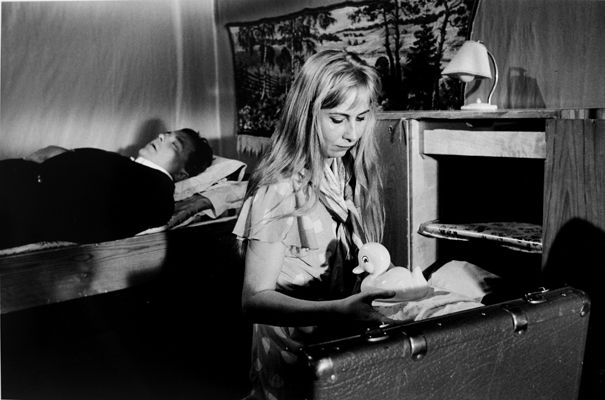Letters and Tablecloths Speak
Focus on the Berlinale Retrospektive for Aki Kaurismäki's THE MATCH FACTORY GIRL, introduced by Jasmila Žbanić.

THE MATCH FACTORY GIRL
Jasmila Žbanić (director of ON THE PATH in this year’s Berlinale Competition) chose and introduced THE MATCH FACTORY GIRL as her selection for the Berlinale Retrospektive. In 1992, during the war in Sarajevo, she saw this film in a cold cinema run on a generator. The beauty of this film warmed her and her fellow viewers, instilling in them a sense of hope: “Art is stronger than destruction and it gives you the power to survive”, said Zbanic.
After a day at the factory, Iris returns home to make her parents dinner, optimistically puts on eyeliner and goes out to a dance club solo. Seven bottles of soda later, with disappointment and smudged makeup she crawls into her makeshift bed (a couch in the living room, one of many apparent homages to Akerman’s JEANNE DIELMAN), and stares blankly from her pillow.
Kaurismaki uses mise-en-scène to say the things the characters don’t – the textures of the walls, the tablecloths, the lighting tells us about the people in the room. Iris’s one-night-stand lives in a lofty modern apartment with brilliantly white walls and a bright pink couch. He has opportunities, money, and most importantly choices, whereas Iris and her mother are frequently depicted in a dingy, dark, smoke-filled room, looking out the window at the light from outside--hopeless and trapped.
The most valuable information is always conveyed in letters, never spoken, and placed silently on tables by apprehensive hands. Through Kaurismäki’s meticulous selection of songs, the jukebox always plays the tunes that speak to Iris’s melancholic heart and sum up the tragically clichéd bleakness of her circumstance.
The opening and closing of doors and trunks always anticipate the next moment, yet we know that they never lead anywhere, until Iris proves us wrong and makes the most decisive choice. Much in the same way Jeanne Dielman did, Iris triumphs and gets her revenge. Kaurismäki’s characters are from the same world as Akerman’s and Fassbinder’s – a simple, terse breed who subtly seem to acknowledge that they live in an imitation of life. Real people may show up at the hospital bed of someone who has just failed to commit suicide and tell them that they aren’t welcome to come home, but real people wouldn’t then place an orange next to them. And real people who’ve just received that orange wouldn’t immediately eat it. Tragedy is often confronted with the banal and the film’s brilliance is in these bizarre silent moments, small movements, and its way of asking us to simply look – at her face, the orange, the wall as we contemplate all the hard sad things in life. The bubbling angst is at once generic and deeply personal, just the way all our pain is.
Spoiled in our comfortable fluffy red seats at the Potsdamer Platz, we can’t begin to understand what Zbanic’s first impressions must have been like under those conditions, yet we share her deep appreciation of this gem of a film, and thank her for sharing it with us.


301 Moved Permanently